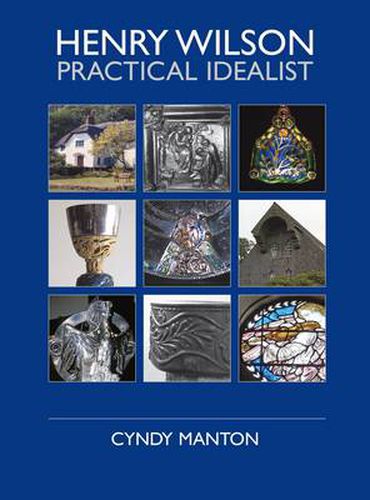Readings Newsletter
Become a Readings Member to make your shopping experience even easier.
Sign in or sign up for free!
You’re not far away from qualifying for FREE standard shipping within Australia
You’ve qualified for FREE standard shipping within Australia
The cart is loading…






Henry Wilson (1864 - 1934) worked in a highly individual style, uniting influences from the Arts & Crafts Movement and Art Nouveau with his own interpretation of traditional forms, symbols and nature. This book discusses examples of his work throughout the UK and in North America, where he designed the bronze entrance doors for a leading Boston tea importer and the great West doors of the Cathedral of St. John the Divine, New York. Of equal impact were his exhibition designs, and his influential teaching at the Royal College of Art, at the Central School of Arts and Crafts, and at the Vittoria Street School for Silversmiths and Jewellers in Birmingham. He began his career as Chief Assistant to the Gothic Revival architect J. D. Sedding, but felt increasingly drawn to the associated arts: church furnishings, sculpture, metalworking and jewellery. His remarkable achievements in these fields range from the breathtaking green marble fittings of St. Bartholomew’s Church in Brighton, to the monumental Elphinstone Tomb in Aberdeen, and from strikingly original schemes of interior decoration and plans for a post-War craft village, to vibrant jewellery glowing with enamel and semi-precious gems. His role as Master of the Art Workers’ Guild (1917) and as President of the Arts and Crafts Exhibition Society (1915-22) serve to confirm his significance in the context of early 20th century design and education. Drawing on original archives, biographical details and insights from family members, this is the first published study devoted wholly to him and his work.
$9.00 standard shipping within Australia
FREE standard shipping within Australia for orders over $100.00
Express & International shipping calculated at checkout
Henry Wilson (1864 - 1934) worked in a highly individual style, uniting influences from the Arts & Crafts Movement and Art Nouveau with his own interpretation of traditional forms, symbols and nature. This book discusses examples of his work throughout the UK and in North America, where he designed the bronze entrance doors for a leading Boston tea importer and the great West doors of the Cathedral of St. John the Divine, New York. Of equal impact were his exhibition designs, and his influential teaching at the Royal College of Art, at the Central School of Arts and Crafts, and at the Vittoria Street School for Silversmiths and Jewellers in Birmingham. He began his career as Chief Assistant to the Gothic Revival architect J. D. Sedding, but felt increasingly drawn to the associated arts: church furnishings, sculpture, metalworking and jewellery. His remarkable achievements in these fields range from the breathtaking green marble fittings of St. Bartholomew’s Church in Brighton, to the monumental Elphinstone Tomb in Aberdeen, and from strikingly original schemes of interior decoration and plans for a post-War craft village, to vibrant jewellery glowing with enamel and semi-precious gems. His role as Master of the Art Workers’ Guild (1917) and as President of the Arts and Crafts Exhibition Society (1915-22) serve to confirm his significance in the context of early 20th century design and education. Drawing on original archives, biographical details and insights from family members, this is the first published study devoted wholly to him and his work.